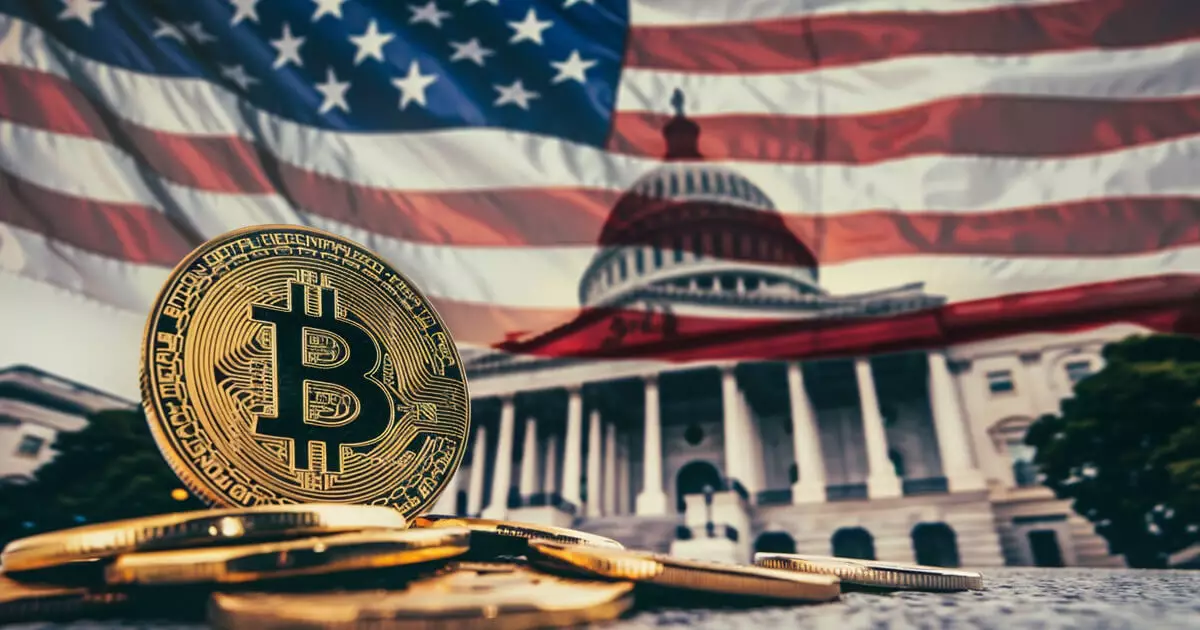In recent months, the cryptocurrency landscape in the United States has taken a notable turn, with significant efforts being made to establish a structured regulatory environment. This shift is primarily driven by the desire to foster innovation while ensuring compliance and consumer protection in the burgeoning digital asset sector. Key figures, particularly David Sacks, the so-called “Crypto Czar” appointed by former President Donald Trump, have underscored the intention to not only evaluate the potential establishment of a Bitcoin reserve but also to forge a path forward for comprehensive federal regulations governing digital currencies and stablecoins.
Sacks’s statements reflect a broader recognition within government circles that the previous lax regulatory framework contributed to a flight of crypto-related innovation away from the United States. By attempting to create clear guidelines and standards for cryptocurrency operations, the current administration hopes to retain and attract legitimate business ventures that had previously sought less regulated environments abroad. This ambition does not only aim to nurture technological advancement but also to delineate compliant entities from ill-intentioned players that may pose risks to investors and the financial system.
A primary area of focus in the regulatory dialogue around cryptocurrencies is stablecoins. Stablecoins, designed to maintain a stable value often pegged to fiat currencies, are viewed as pivotal in bolstering the US dollar’s status as the world’s reserve currency. This perspective was prominently discussed during a recent press conference where lawmakers, including Senators Tim Scott and John Boozman, expressed their commitment to passing stability-focused legislation within the first 100 days of office. The urgency behind this legislative push highlights the recognition of stablecoins’ critical role in the evolving financial landscape, often described as part of the emerging Internet 3.0.
The introduction of the “Clarity for Payment Stablecoins Act of 2024” further emphasizes the government’s commitment to fostering a well-regulated environment for stablecoins. This proposed legislation outlines specific criteria for stablecoin issuers, such as the need for a one-to-one reserve requirement and mandatory public disclosures about reserve compositions. By mandating transparency and accountability, lawmakers seek to build trust among consumers while ensuring that stablecoin operations are conducted within a firmly established legal framework.
At the heart of this regulatory overhaul is the collaboration between the Securities and Exchange Commission (SEC) and the Commodity Futures Trading Commission (CFTC). Each agency has traditionally governed different aspects of financial markets, with the SEC overseeing securities and the CFTC responsible for commodities. By clarifying the jurisdictional boundaries, regulators can better tailor enforcement mechanisms to suit the unique characteristics of various digital assets.
Notably, Commissioner Hester Peirce, recognized as “Crypto Mom” for her progressive stance on cryptocurrency regulation, is leading a newly formed SEC crypto task force aimed at addressing long-standing ambiguities within the industry. Peirce has characterized the SEC’s previous methods as inconsistent, creating a convoluted regulatory landscape that has hampered market participants’ ability to navigate their obligations. This task force is expected to engage with multiple stakeholders, ensuring the development of clear, consistent guidelines that protect investors while promoting innovation in the cryptocurrency realm.
Unfortunately, inconsistencies in previous regulatory actions have culminated in numerous legal challenges surrounding the classification of digital assets, creating a climate of uncertainty that stifles both investment and innovation. By clearly enumerating the legal status of various cryptocurrencies, the SEC aims to lay a solid foundation for future growth in the sector.
As the United States seeks to establish itself as a global leader in the cryptocurrency arena, the path forward is paved with both opportunities and challenges. Regulatory clarity will play a crucial role in attracting domestic and foreign investments while ensuring that both consumers and businesses operate with confidence.
However, it is vital to recognize that the road to effective regulation is fraught with complexities. While efforts, such as those proposed by the new legislation and initiatives under the SEC, are steps in the right direction, it may take time for these frameworks to materialize fully and for the various regulatory bodies to synchronize their efforts effectively.
The momentum towards establishing a cohesive regulatory framework for cryptocurrency in the United States represents a pivotal moment for the industry. With a concerted emphasis on transparency, accountability, and innovation, the stage is being set to create an environment conducive to responsible growth in the digital asset ecosystem. The coming months will undoubtedly be pivotal as lawmakers, regulators, and industry stakeholders collaborate to shape a future that balances growth with security.



















Leave a Reply